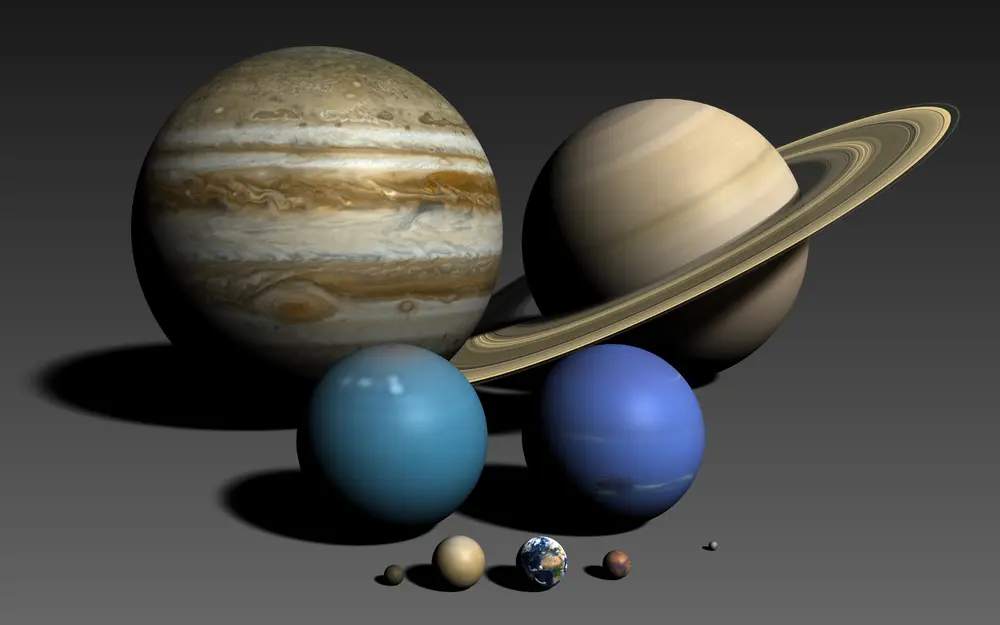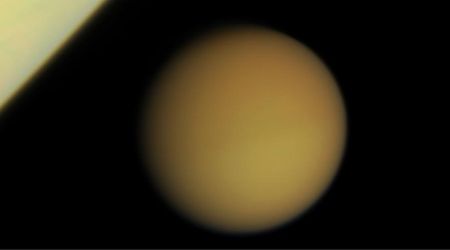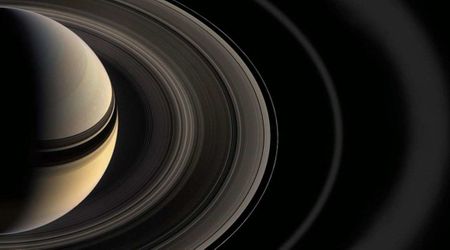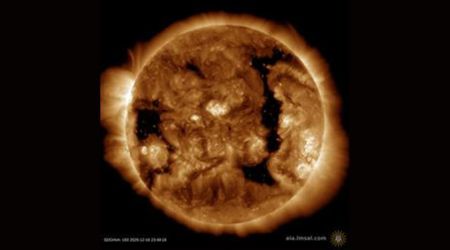how many earths can fit inside Jupiter


We all know that space is big and that objects in space are often so big, it’s hard to even fathom. But, how big is Jupiter, the largest planet in our solar system, in an easy-to-understand way? How many Earths could fit inside? Let’s explore.
Introduction
Jupiter is so big that it is a failed star. If it had snagged about 80 times more mass, it could have become a star. Instead, it became the biggest planet inside our solar system, over two times more massive than all the other planets combined. In fact, Jupiter and its moons work very similarly to how the Solar System works.
But to get a sense of how big it is, let’s explore how to measure its size, ultimately leading to calculating how many Earths can fit inside Jupiter. While it can still be difficult to understand how big the Earth is, these comparative measurements can give us a good sense of it.
Together, we’ll explore Jupiter’s massive size, how it impacts various aspects of the planet, the idea and calculation of volume, the volume of Jupiter, the conversion of that volume to how many Earths would fit inside, and a general comparison between the two planets.
The Size of Jupiter
Let’s begin looking at just how massive Jupiter is. There are many ways to describe how big something is. Let’s start with weight and distance across.
Jupiter weighs in at about 4.1857 x 1027 lbs (1.8986 x 1027 kg) or 1,898.6 billion trillion metric tons (2,093 billion trillion US tons).
Earth weighs in at about 13.1688 x 1024 lbs (5.97 x 1024 kg) or about 5.97 billion trillion metric tons (6.5834 billion trillion US tons).
All in all, Jupiter is about 317.8 times as massive as Earth.
Jupiter has a mean radius of 69,911 ± 6 km (43,441 ± 3.7 mi) and Earth has a mean radius of 6,371.0 km (3,958.8 mi). Therefore, you could fit almost 11 (10.97 to be exact) Earths across Jupiter.
In fact, Jupiter is such a big gas giant that:
- It has the strongest magnetic field of all the planets (200,000 times as strong as Earth’s)
- It has 2.4 times Earth’s gravity (someone who weighs 100 pounds on Earth would weigh about 240 pounds on Jupiter)
- As you travel further into its interior, the temperature increases, with the core being hotter than the Sun
- The atmosphere is denser than ours, but thins more rapidly as you go up, but is still denser than ours overall with more gases overall
- Its weather is greatly different than ours
- Storms may be slower at the surface but higher, larger, and last much longer without land to shorten their lifetimes (like the Great Red Spot)
- Heat is retained more effectively with less variation between regions as well as day and night temperature

In the above image, Jupiter's size is compared to all other planets in the solar system.
The Volume of Jupiter
Volume is an alternatively effective way of measuring how big one object is compared to another. As compared to our previous calculation of weight, volume determines how much can fit inside a particular three-dimensional object. If you want to know how many books fit inside a box or how many boxes could fit inside a room, you need to know its volume. The mathematical formula for volume for a rectangular prism such as a box or a rectangular/ square room is length times width times height. This can tell you how much space is theoretically available inside an object.
But what about a sphere?
Almost 11 Earths across the middle of Jupiter is not an accurate sense of volume, especially when considering three-dimensional Earths inside of a three-dimensional Jupiter. We need to use the calculation of 4/3 x Pi x radius3 to figure out this answer. (Pi is 3.14)
Knowing Jupiter has a mean radius of 69,911 ± 6 km (60217.7 ± 3.7 mi) and using this equation, we learn Jupiter has a volume of 1.43 x 1015 km3 (1,430 trillion cubic km; 343 trillion cubic mi).
Using Earth’s mean radius of 6,371 km (3,958.8 mi), Earth has a volume of 1.08 trillion km3 (259 million cubic mi).
Therefore, to find out how many Earths fit inside Jupiter, we divide the volume of Jupiter by the volume of Earth to get 1,299.
So, we could fit almost 1300 Earths inside Jupiter.
*You may realize that this is not an entirely realistic number, but rather a theoretical one since there would be space between Earths due to their spherical shape. Experts have used spherical stacking to determine a more realistic number that would fill about 74% of Jupiter’s volume and therefore almost a thousand Earths. However, at the end of the day, this difference is largely negligible especially since we are using this as an abstract way to wrap our minds around the massive size of Jupiter.*
The above animation effectively showcases the massive size of Jupiter in comparison to Earth, providing a true perspective of its enormity.
The Comparison of Jupiter and Earth
So while saying we could fit 11 Earths across Jupiter gives us an idea of its size, knowing from the volumes of the two that we could fit almost 1300 Earths inside Jupiter can provide a deeper understanding of just how massive it is.
Jupiter‘s massive size had major impacts on the formation of solar system and how it exists today, both benefitting and hurting us over billions of years including:
- Protecting planets in inner orbits
- Helping us maintain nearly circular orbits that create stable climates over time
- Eating up asteroid or comets that come too close “vacuum cleaner of the solar system
- Creating and maintaining the asteroid belt
- Altering orbits of small bodies that come too close, either sucking them in like Comet Shoemaker-Levy 9 in 1994, or sending them on longer orbits and creating some of these comets we observe today, especially those in the Oort Cloud past Neptune
- Pushing Neptune and Uranus out away from the Sun to their current orbits
- Sending objects hurtling toward the inner planets and particularly in the past, possibly even big ones such as the one that likely led to the extinction of the dinosaurs 65 million years ago

Conclusion
While it may be impossible for us to truly fathom the gargantuan sizes of objects in space, even those of smaller objects like planets, it can help to provide a comparison with something we do know. Our most massive planet comes into perspective when we use Earth as a measuring stick. Almost 11 Earths fit across its face and it weighs almost 318 times heavier than Earth. But in terms of volume, this gas giant could fit almost 1,300 Earths inside it, more than the number of gumballs in a classic vending machine (about 850).
Jupiter’s massive size greatly impacts its own magnetic field, gravity, temperature, weather, and atmosphere, but also had a hand in shaping the solar system we see today, impacting the orbits of planets and other smaller bodies in the solar system, both protecting us from meteors and sending them our way as well as creating and maintaining both the asteroid belt and the Oort Cloud, and more.
The so-called King of the Planets definitely earns its nickname.









